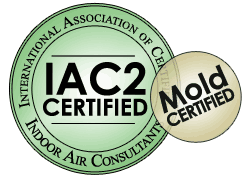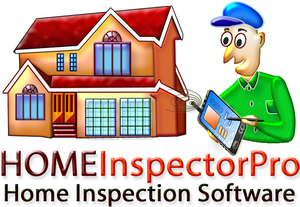Pyramid Home Inspections Call 951-536-1058 for a free price quote!

Pyramid Home Inspections
David Nasser 951-536-1058
Moreno Valley, CA 92553
FHA/HUD Rehabilitation
The Federal Housing Administration (FHA), which is part of the Department of Housing and Urban Development (HUD), administers various single family mortgage insurance programs. These programs operate through FHA-approved lending institutions which submit applications to have the property appraised and have the buyer's credit approved. These lenders fund the mortgage loans which the Department insures. HUD does not make direct loans to help people buy homes.The Section 203(k) program is the Department's primary program for the rehabilitation and repair of single family properties. As such, it is an important tool for community and neighborhood revitalization and for expanding homeownership opportunities. Since these are the primary goals of HUD, the Department believes that Section 203(k) is an important program and intend to continue to strongly support the program and the lenders that participate in it.
Many lenders have successfully used the Section 203(k) program in partnership with state and local housing agencies and nonprofit organizations to rehabilitate properties. These lenders, along with state and local government agencies, have found ways to combine Section 203(k) with other financial resources, such as HUD's HOME, HOPE, and Community Development Block Grant Programs, to assist borrowers. Several state housing finance agencies have designed programs, specifically for use with Section 203(k) and some lenders have also used the expertise of local housing agencies and nonprofit organizations to help manage the rehabilitation processing.The Department also believes that the Section 203(k) program is an excellent means for lenders to demonstrate their commitment to lending in lower income communities and to help meet their responsibilities under the Community Reinvestment Act (CRA). HUD is committed to increasing homeownership opportunities for families in these communities and Section 203(k) is an excellent product for use with CRA-type lending programs. If you have questions about the 203(k) program or are interested in getting a 203(k) insured mortgage loan, we suggest that you get in touch with an FHA-approved lender in your area or the Homeownership Center in your area.
Most mortgage financing plans provide only permanent financing. That is, the lender will not usually close the loan and release the mortgage proceeds unless the condition and value of the property provide adequate loan security. When rehabilitation is involved, this means that a lender typically requires the improvements to be finished before a long-term mortgage is made. When a homebuyer wants to purchase a house in need of repair or modernization, the homebuyer usually has to obtain financing first to purchase the dwelling, additional financing to do the rehabilitation construction, and a permanent mortgage when the work is completed to pay off the interim loans with a permanent mortgage. Often the interim financing (the acquisition and construction loans) involves relatively high interest rates and short amortization periods. The Section 203(k) program was designed to address this situation. The borrower can get just one mortgage loan, at a long-term fixed (or adjustable) rate, to finance both the acquisition and the rehabilitation of the property. To provide funds for the rehabilitation, the mortgage amount is based on the projected value of the property with the work completed, taking into account the cost of the work. To minimize the risk to the mortgage lender, the mortgage loan (the maximum allowable amount) is eligible for endorsement by HUD as soon as the mortgage proceeds are disbursed and a rehabilitation escrow account is established. At this point the lender has a fully-insured mortgage loan.
Eligible Property
To be eligible, the property must be a one- to four-family dwelling that has been completed for at least one year. The number of units on the site must be acceptable according to the provisions of local zoning requirements. All newly constructed units must be attached to the existing dwelling. Cooperative units are not eligible. Homes that have been demolished, or will be razed as part of the rehabilitation work, are eligible provided some of the existing foundation system remains in place. In addition to typical home rehabilitation projects, this program can be used to convert a one-family dwelling to a two-, three-, or four-family dwelling. An existing multi-unit dwelling could be decreased to a one- to four-family unit. An existing house (or modular unit) on another site can be moved onto the mortgaged property. However, release of loan proceeds for the existing structure on the non-mortgaged property is not allowed until the new foundation has been properly inspected and the dwelling has been properly placed and secured to the new foundation. A 203(k) mortgage may be originated on a "mixed use" residential property provided the property has no greater than 25 percent (for a one story building); 33 percent (for a three story building); and 49 percent (for a two story building) of its floor area used for commercial (storefront) purposes. The commercial use will not affect the health and safety of the occupants of the residential property and the rehabilitation funds will only be used for the residential functions of the dwelling and areas used to access the residential part of the property.
Condominium Unit
The Department also permits Section 203(k) mortgages to be used for individual units in condominium projects that have been approved by FHA, the Department of Veterans Affairs, or are acceptable to FNMA under the guidelines listed below. The 203(k) program was not intended to be a project mortgage insurance program, as large scale development has considerably more risk than individual single-family mortgage insurance. Therefore, condominium rehabilitation is subject to the following conditions:
- Owner/occupant and qualified non-profit borrowers only- no investors.
- Rehabilitation is limited only to the interior of the unit. Mortgage proceeds are not to be used for the rehabilitation of exteriors or other areas which are the responsibility of the condominium association, except for the installation of firewalls in the attic for the unit
- Only the lesser of five units per condominium association, or 25 percent of the total number of units, can be undergoing rehabilitation at any one time
- The maximum mortgage amount cannot exceed 100 percent of after-improved value.
- After rehabilitation is complete, the individual buildings within the condominium must not contain more than four units.
By law, Section 203(k) can only be used to rehabilitate units in one-to-four unit structures. However, this does not mean that the condominium project, as a whole, can only have four units or that all individual structures must be detached. Example: A project might consist of six buildings each containing four units, for a total of 24 units in the project and, thus, be eligible for Section 203(k). Likewise, a project could contain a row of more than four attached townhouses and be eligible for Section 203(k) because HUD considers each townhouse as one structure, provided each unit is separated by a 1 1/2 hour firewall (from foundation up to the roof). Similar to a project with a condominium unit with a mortgage insured under Section 234(c) of the National Housing Act, the condominium project must be approved by HUD prior to the closing of any individual mortgages on the condominium units.
How the Program Can Be Used
This program can be used to accomplish rehabilitation and/or improvement of an existing one-to-four unit dwelling in one of three ways:
- To purchase a dwelling and the land on which the dwelling is located and rehabilitate it.
- To purchase a dwelling on another site, move it onto a new foundation on the mortgaged property and rehabilitate it.
- To refinance existing indebtedness and rehabilitate such a dwelling.
To purchase a dwelling and the land on which the dwelling is located and rehabilitate it, and to refinance existing indebtedness and rehabilitate such a dwelling, the mortgage must be a first lien on the property and the loan proceeds (other than rehabilitation funds) must be available before the rehabilitation begins. To purchase a dwelling on another site, move it onto a new foundation and rehabilitate it, the mortgage must be a first lien on the property; however, loan proceeds for the moving of the house cannot be made available until the unit is attached to the new foundation.
Eligible Improvements
Mortgage proceeds must be used in part for rehabilitation and/or improvements to a property. There is a minimum $5000 requirement for the eligible improvements on the existing structure(s) on the property. Rehabilitation or improvements to a detached garage, a new detached garage, or the addition of an attached unit(s) (if allowed by the local zoning ordinances) can also be included in this first $5000. Properties with separate detached units are acceptable, however, a newly constructed unit must be attached to an existing unit to be eligible under 203(k). Any repair is acceptable in the first $5000 requirement that may affect the health and safety of the occupants. Minor-or cosmetic repairs by themselves cannot be included in the first $5000, but may be added after the $5000 threshold is reached. Examples of eligible improvements are listed below. (This list is not all inclusive.)
- Structural alterations and reconstruction (e.g., repair or replacement of structural damage, chimney repair, additions to the structure, installation of an additional bath(s), skylights, finished attics and/or basements, repair of termite damage and the treatment against termites or other insect infestation, etc.).
- Changes for improved functions and modernization (e.g., remodeled bathrooms and kitchens, including permanently installed appliances, i.e., built-in range and/or oven, range hood, microwave, dishwasher).
- Elimination of health and safety hazards (including the resolution of defective paint surfaces or lead-based paint problems on homes built prior to 1978).
- Changes for aesthetic appeal and elimination of obsolescence (e.g., new exterior siding, adding a second story to the home, covered porch, stair railings, attached carport).
- Reconditioning or replacement of plumbing (including connecting to public water and/or sewer system), heating, air conditioning and electrical systems. Installation of new plumbing fixtures is acceptable, including interior whirlpool bathtubs.
- Installation of Well and/or Septic System. The well or septic system must be installed or repaired prior to beginning any other repairs to the property.
- Roofing, gutters and downspouts.
- Flooring, tiling and carpeting.
- Energy conservation improvements (e.g., new double pane windows, steel insulated exterior doors, insulation, solar domestic hot water systems, caulking and weatherstripping, etc.).
- Major landscape work and site improvement (e.g., patios, decks and terraces that improve the value of the property equal to the dollar amount spent on the improvements or required to preserve the property from erosion).
- The correction of grading and drainage problems.
- Tree removal is acceptable if the tree is a safety hazard to the property.
- Repair of existing walks and driveway if it may affect the safety of the property.
- Improvements for accessibility to a Disabled Person (e.g., remodeling kitchens and baths for wheelchair access, lowering kitchen cabinets, installing wider doors and exterior ramps, etc.).
When basic improvements are involved, the following costs can be included in addition to the minimum $5000 requirement:
- New free standing range, refrigerator, washer and dryer, trash compactor and other appurtenances (used appliances are not eligible).
- Interior and exterior painting.
- The repair of a swimming pool, not to exceed $1,500.
Luxury items and improvements that do not become a permanent part of the real property are not eligible as a cost of rehabilitation. The items listed below (not limited to this list) are not acceptable under the 203(k) program, including the repair of any of the following: Barbecue pit; bathhouse; dumbwaiter; exterior hot tub; sauna, spa and whirlpool bath; outdoor fireplace or hearth; photo mural; installation of a new swimming pool; gazebo; television antenna; satellite dish; tennis court; tree surgery. Additions or alterations to provide for commercial use are not eligible.
Please visit the HUD website for more information on this program.
Here's what our clients say about us
"David's work is the best! Always gets the job done right away!! Would definitely recommend him to all my clients"
Sunny Wang - Etopbroker
I love the Idyllwild area. If you are looking to buy or sell a home in Idyllwild, give me a call to book your home inspection today!
Need a website for your business?




